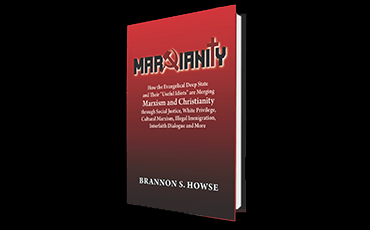I started this month with an experiment: listen to 12 sermons from Revelation 6, from 12 well-known pastors; half amillennialists, and half premillennialists. I ended this month with a new (to me) argument for premillennialism. Let me explain:
Revelation is obviously the book of the New Testament where one’s millennial view substantially affects the interpretation of the book as a whole. Premillennialists and amillennialists disagree over chapters like 1 Corinthians 15, Acts 1, and Romans 11. But overall, millennial views allow for substantial agreement on things like 1 Corinthians 1-14, Acts 2-27, and Romans 1-10/12-16.
But when it comes to Revelation, all bets are off.
That is not to say that there is not some agreement on parts of Revelation. For example, while most premillennialists insist that the churches of Revelation 1-3 were literal churches, there are many amillennialists that will say the same thing.
Even in Revelation 4-5, where John’s vision moves from earth to heaven, there too is substantial overlap between postmillennialists and premillennialists—Jonathan Edwards and John Piper say the same thing about Revelation 5, for example.
And then comes Revelation 6. Revelation 6 is the description of the first six of the seven seals of God’s judgement. The first four seals are represented by the four horseman—a passage so familiar that “the four horseman of the apocalypse” has become idiomatic. For non-Christians, this just might be the most well-known passage in Revelation.
With that in mind, in preparation to preach Revelation 6 I listened to a dozen sermons from well-known preachers on this passage. While I normally don’t listen to sermons on a passage I’m about to preach, the change in between Revelation 5 and 6 is so stark that I wanted to see what other pastors did with it–the kind of pastors whose conferences I go to and whose books I buy.
What I found surprised me.
First, a side note: there is nothing in this chapter that is expressly millennial. In Revelation 7, there is a pause between the sixth and seventh seals, and 144,000 Israelites are sealed. But in the confines of Revelation 6, there is nothing about Israel, the kingdom, or the return of Christ.
Nevertheless, unlike Revelation 1-5, those who hold to premillennialism preached Revelation 6 very differently than amillennialists.
But what surprised me the most was not that gulf. Rather, it was the remarkable consistency between premillennialists on this passage, in contrast with the utter inconsistency among amillennialists.
For background: here are the six seals:
- False peace led by the anti-Christ
- Global war
- War-induced famine
- One-fourth of the earth dies
- Martyrs pray for vengeance, and the Lord hears their prayers
- Cosmological collisions rock the earth.
All of the premillennialists I listened to saw the six seals as sequential. If not strictly chronological, at the very least logically correlated; one leads to the other. They all saw the first seal described in detail in Daniel 11:36-ff. They all took the unrolling of the seals as the continuation of the scene in Daniel 12, and they all understood this as the fulfillment of Daniel 12:9. They all saw the first four seals described in Luke 21:20-25, Matthew 24, and Mark 13. They took Revelation 6 as what was prophesied in 2 Thessalonians 2:3-12. They understood Revelation 6 to be the Day of the Lord foretold in the Old Testament.
In other words they all agreed that these seals are sequential, future, prophesied, and constitute the Day of the Lord (and when D.A. Carson, John MacArthur, and S. Lewis Johnson—among others—all preach a difficult passage with essentially the same points and cross references, it is somewhat noteworthy). They understood Revelation 6 not to be teaching something new, but rather connected it to almost a dozen other passages, and most of the six guys all used the same passages.
For the premillennialists, Revelation 6 makes sense in connection with many others passages, and harmonizes with them quite nicely.
In contrast, the amillennialists I listened to were all over the map.
One said that all seven seals were unrolled when Adam ate the fruit in the garden, and that Revelation 6 describes the way the world has been ever since Eden. This pastor said that these seals explain why there is suffering in a fallen world. For his preacher, the seals were chronological, and describe the exit from Eden to the flood. But he also said that believers are spared the wrath of these seals because Jesus bore the wrath of the seven seals for the elect of all ages.
Another said that the seals were opened at the cross of Christ, and they are poured out on the world from the cross forward until heaven. This person noted that believers do indeed receive this wrath, and thus this passage explains why even believers suffer and die in a fallen world.
Still another said that the seals were opened at the ascension/Pentecost, and mark the wrath that God is pouring out all those who reject Christ. For that reason, they cannot be chronological or correlated, but are rather just different descriptions of the wrath of God poured out as God ushers this world into hell.
Yet one more prominent amillennialist said that these seals are not for earth at all, but instead give a picture of the wrath reserved for those in hell.
One of the pastors I listened to was apparently aware of the diverse interpretations, and explained them by saying that the genre of Revelation is like a modern art painting. It conveys diverse (“and even contradictory”) messages, but “the beauty of the genre of Revelation is that all of those views can not only be true, but also intended by the author.”
Finally, I heard one pastor preach this at a missions conference (he was apparently assigned the text), and he pointed out how impossible it is to get any two commentators to agree on anything in Revelation 6, so the obvious take away is that Revelation 6 is in the Bible to keep us humble, and help us realize that God’s wrath is horrible, and it falls upon the proud.
This experience not only confirms me in my premillennialism, but the longer I’ve thought about it, the more it has become to me a strong argument for premillennialism. When premillennialists tackle this passage, their hermeneutic allows them to make sense of it, and tie it to other places, and demonstrate the fulfilment of prophecy.
In contrast, the amillennialists I listened to—the very people that often wax eloquently on the genre of Revelation, and how understanding it helps them rightly interpret the book—come away not making a great deal of sense of the passage. A few even claimed it was designed to teach contradictory things, and on the major issues (are the seals sequential? Is this the prophesied Day of the Lord? Is this even future at all?) it seemed like no two agreed with each other.
I started this study thinking Revelation 6 did not have a lot to say about millennialism, but ended it seeing that the same hermeneutic that leads to premillennialism, also leads to clarity in difficult passages.
Support Our Broadcast Network
Trending Stories
Latest
We're a 100% Listener Supported Network
3 Simple Ways to Support WVW Foundation
Make Monthly Donations
-or-
A One-Time Donation
-
Mail In Your Donation
Worldview Weekend Foundation
PO BOX 1690
Collierville, TN, 38027 USA -
Donate by Phone
901-825-0652
















